Конспект уроку з англійської мови для 8 класу на тему "The United Kingdom"
Конспект уроку з англійської мови для 8 класу на тему "The United Kingdom". Урок-змагання з елементами рольової гри про різні аспекти життя у Великобританії.
Lesson 4
Theme. The United Kingdom
Objectives:
- Practical: to involve pupils in the process of English communication.
- Educational: to activate pupils’ thinking abilities, their reading skills, trying to get the main information from the text; to speak about the UK; to use new vocabulary in the sentences; to teach pupils to use material of the previous lessons in speech.
- Developing: to develop pupils’ logical thinking, memory,
- Upbringing: to discover cultural values through varied creative classroom activities, to promote pupils’ intellectual curiosity.
Equipment: cards, the map of the UK, hand out "Rearrange the words", “ True or False”, computer presentation, red and blue stars, the crossword.
Type of the lesson: lesson competition.
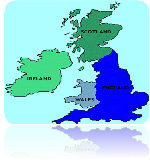
Procedure
ENGLAND, A HAPPY LAND WE KNOW,
WHERE FOLLIES NATURALLY GROW,
WHERE WITHOUT CULTURE THEY ARISE,
AND TOW’R ABOVE THE COMMON SIZE.
CHARLES CHURCHILL
I. The beginning of the lesson.
1. Greeting.
T: Good morning, everyone! I’m glad to see you. How are you getting on?
Ps: Good morning, teacher. We are glad to see you, too. We are fine, thank you.
2. Introduction the theme and aims.
T: The topic of our today’s lesson is “The UK”.
Boys and girls, today we have an unusual lesson – a competition. There are two teams at the lesson: the girls’ team and the boys’ team. They will show us their knowledge of the United Kingdom because our lesson is devoted to this country. We’ll speak about the sights, the capital of the country, some famous people and interesting facts. We’ll have several tasks at the lesson. Some of them were prepared by you at home but most of them are unprepared. I hope our competition will be fun. I have lots of red and blue stars here. For an excellent answer you will get a red star. For a good answer you’ll get a blue star. At the end of the competition you’ll count all the stars you’ve received. The winner will be the team with the biggest number of the red stars. The pupils who show the best knowledge of the UK will be given special prizes. Let’s start our competition and introduce our teams to each other. What’s the name of the girls’ team? What’s the name of the boys’ team?
Ps: The name of the girls’ team is the “the Rose”. The name of the boys’ team is “the Daffodil”.
T: By the end of the lesson you should be able to apply knowledge of the words and expressions for this topic in a new situation, to talk about the UK.
3. Warming up.
Game "Rearrange the words"
T: The following words are written on the blackboard:
Inhabitant, climate, cafe, people, exhibition, the British, mountain, hotel, church, Ukrainians, valley, theatre, avenue, lake, Scottish, forest.
T: Each word belongs to one of the three distinct categories. Your task is to work out what the three categories are, and to rearrange the words into three groups. Work in pairs. The first pair to finish is the winner.
For example:
Geographical features: climate, mountain, valley, lake, forest.
II. The main part of the lesson.
1. Vocabulary Practice.
a) New vocabulary page 120.
T: Fill in the words from the 'New Vocabulary'.
1. When you speak about the ... of a place you mean its hills, rivers, forests and so on.
2.... is a large area of land with very few trees on it.
3... is a field which has grass and flowers growing in it.
4.... is a long and narrow piece of land between hills.
5. People who live in their own house, usually put a ... around it and a small yard in front of it.
6.... are low-lying lands.
7... are lands in the mountains.
b) T: Rank the following kinds of geographical relief of the earth surface according to their height over the sea level. Start with the highest.
Mountain.
plain
mountain
highlands
valley
hills
uplands
lowlands
2. Reading. (silently)
1) Pre-Reading activities
a) T: Next task is the following: answer the questions about the United Kingdom. You’ll get a red star for a right answer.
- Where is the United Kingdom situated?
(The United Kingdom is situated on the island in the northwest of Europe)
- Which island is the largest one?
(Great Britain is the largest island)
- What separates Great Britain from the Continent?
(The English Channel separates Great Britain from the Continent)
- How many countries does the UK consist of?
(The UK consists of four countries: England, Scotland, Wales and Northern Ireland)
- What is the population of the United Kingdom?
(The population of the United Kingdom is about 60 million people)
- Which city is the capital of the country?
(London is the capital of the country)
2) While-Reading activities.
a) T: While-reading the text, complete the sentences:
The symbol of England is …
The symbol of Wales is …
b) T: True or False. Correct the false sentence.
- The most famous lake is called Nessie.
- Edinburgh is the capital of Wales.
- Edinburgh has a huge festival every summer.
- A red rose is the symbol of England.
- Rugby is a national sport in Wales.
- Welsh is studied at school.
Letters
When I remember my trip to Britain, I think of two main areas, Scotland and England – the places I have been to.
Scotland is very beautiful! There are mountains, valleys, lakes and hundreds of islands.
The most famous lake is called Loch Ness. It is very deep and some people believe that a mysterious creature lives at the bottom. This monster is often called “Nessie”.
The capital of Scotland is Edinburgh. Every summer it has a huge festival: artists, poets, musicians and actors from all over the world go there.
I was also impressed by beautiful gardens all over England. By the way, the symbol of England is a red rose and English people are crazy about gardening.
Some of the wildest and most beautiful countrysides in England are both in the north. They are very popular with walkers, campers and climbers.
I went to the northeast near Newcastle and saw the famous Hadrian’sWall. Roman soldiers built it 2000 years ago. Fantastic!
Yours, Olena Tatarchuk
I had a chance to visit Wales on my last holiday. I came across a red dragon – the oldest symbol of Wales everywhere. Holiday makers love the beautiful Welsh beaches, and the mountains of Snowdonia are popular, too.
There are some ancient castles which are also big tourist attractions. A popular musical instrument in Wales is a harp. Welsh people like singing and organize music festivals. The Welsh are crazy about rugby. It’s their national sport. There is a fantastic stadium in Cardiff.
I was surprised when I learnt that there are 2 official languages in Wales, Welsh and English. Children study Welsh at school. Road signs are usually in Welsh and English, too.
Sincerely, Maxym Chubenko
When you travel about the country you can see how the scenery changes right in front of your eyes. Highlands turn into lowlands, forests and hills turn into meadows and plains very quickly. It’s hard to believe, but in Great Britain one can find practically any type of scenery. Often what people first notice about Britain, especially if they arrive by plane, is green of the fields, hedges and trees.
Britain is an unusually beautiful country!
With regards,
Marta
3) Post-Reading Activity.
a) T: Match the names of the countries with some notes about them.
|
Names of the countries |
Some notes |
|
1. Northern Ireland
|
a) The popular musical instrument in this country is harp. People are fond of rugby. Road signs are usually in native language and in English. |
|
2. England
|
b) This is the most mountainous area in Great Britain. The country is popular with campers and climbers. A huge festival of music and literature takes place here every year. |
|
3. Wales
|
c) This is the part of a separate island. Saint Patrick is a patron of it. Bagpipes and fiddles are considered as traditional music instruments in this country. |
|
4. Scotland
|
d) You can find lots of plains and meadows here. Gardening is very popular among the population. People are proud of its language because it is spread out over the whole UK. |
b) T: Answer the questions:
1. What would you like to see in Scotland? Why?
2. What was Helen impressed by in England?
3. What parts of England did she visit? What did she see there?
4. What do the holiday makers like in Wales?
5. What can anyone see in Wales?
6. What was Maxym surprised with?
3. Listening.
1) Pre-Listening Activity.
T: What is the capital of Northern Ireland?
What else do you know about Northern Ireland?
2) While-listening Activity.
T: Listen to the text and complete the missing information.
Northern Ireland
Northern Ireland is a country that is part of the United Kingdom of Great Britain and Northern Ireland. Its capital is Belfast. Northern Ireland is situated in the north-east of the island of Ireland. Its total area is 13.843 square kilometers. It shares a border with the Republic of Ireland in the south and in the west. Northern Ireland has a temperate climate. The weather is changeable at all the times of the year. The highest maximum temperature +30C was fixed on 12 July 1983, and the lowest minimum temperature -18C was fixed on 1 January 1979. Northern Ireland is a beautiful country with mountainous territories and green valleys. Wonderful scenery attracts a lot of tourists who are fond of hiking, sailing, skiing and canoeing.
Name of the country________________________________________________
Capital__________________________________________________________
Total area________________________________________________________
Climate__________________________________________________________
Maximum temperature:_________________fixed on______________________
Minimum temperature:_________________fixed on_______________________
3) Post-Listening Activity.
T: Retell the text. The team that will do it in more detail is getting 2 red stars another one – only 1 red star.
4. Role-play.
T: Imagine that you are participants of the intellectual show “The Cleverest Pupil”. The following task for each pupil in the team is to do the British Quiz.. The Britain Quiz has some questions. There are three answers to each question but only one of them is correct. You should write the number of the correct answer. I’ll give you 4 minutes to do it. Remember, you’ll get a red star for each right answer.
|
Team 1 |
Team 2 |
|
1. Great Britain is … a) an island b) a peninsula c) situated on the continent |
1. The longest river in Great Britain is… a) the Thames b) the Severn c) the Avon |
|
2. What kind of state is Great Britain? a) Absolute monarchy b) Presidential republic c) Parliamentary monarchy |
2. You have received a letter. The address of the sender is №10, Downing Street, London, GB. Who sent it for you? a) The Royal family b) the Prime Minister of Great Britain c) the Government of Great Britain |
|
3. What is often called the “Land of Songs”? a) Scotland b) Wales c) Northern Ireland |
3. William Shakespeare was born in…. a) Oxford b) Liverpool c) Stratford-on-Avon |
|
4. Cardiff is the capital of… a) Wales b) Scotland c) Northern Ireland |
4. Hyde Park is in… a) London b) Oxford c) Montreal |
|
5. Schools in Britain have… a) four terms b) two terms with two long holidays c) three terms |
5. All-inclusive schools in Great Britain are called… a) comprehensive schools b) public schools c) boarding schools |
|
6. Buckingham Palace is… a) the official London residence of her Majesty the Queen and her Family b) a famous church c) a famous night club |
6. What city did the Beatles come from? a) Edinburgh b) Glasgow c) Liverpool
|
|
7. You know that each composite part of the UK has its own national symbol. Which of these plants identifies Northern Ireland? a) rose b) leek/daffodil c) shamrock |
7. There are a lot of famous women in the British history, but only one of them is known as the Iron Lady. Do you know her name? a) Margaret Thatcher b) Florence Nightingale c) Jane Seymour |
|
8. All the Britons know the following verse by heart “God save our gracious Queen! Long live our noble Queen! God save the Queen! Send her victorious, Happy and glorious, Long to reign over us, God save the Queen.” Because it is… a) a very popular folk song b) the British National Anthem c) the hit of the British rock band “Queen” |
8. You are eager to see the mystery monster of Loch Ness with your own eyes. Which of the following questions would you ask your guide? a) Was Nessy seen by your tourists this year? b) Have Nessy been seen by your tourists this year? c) Has Nessy been seen by your tourists this year?
|
|
Keys: 1a, 2c, 3b, 4a, 5c, 6a, 7c, 8b. |
Keys: 1b, 2b, 3c, 4a, 5c, 6c, 7a, 8c. |
5. Writing.
T: Newspapers and television bring news and opinions from all over the world. From this information we start to build up pictures of other countries and other people in our minds.
Imagine you’ve won a prize – a travel to any country you like. Write a letter to your pen friend and tell him/her about your choice. Explain why you’d like to visit this country. Share the information you’ve got, your thoughts and opinions. Write mini-compositions. Then read your compositions (some pupils).
6. Group work. (Exchange the information).
T: Let’s go back into the history of Great Britain.
Students work in 3 groups. They read the texts in their groups, and then exchange their representatives, and these representatives retell the texts they’ve read.
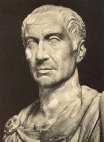
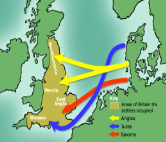
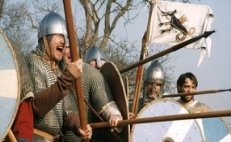
From the History of Great Britain
Group1:
In 55 B.C. Julius Caesar landed near Dover with his Roman army, but it was
only 150 years later that the Romans managed to conquer Britain and built settlements
and forts. The Romans stayed for 400 years. Hadrian’s Wall, which runs
across the north of England, marks the northern border of the Roman colony. The
wall was built in 101 A.D. to keep the Scots out of England.
Group2:
After the fall of the Roman Empire the Romans had to leave Britain to defend
their own country. Then the Britons were conquered by Germanic tribes called Angles, Saxons
and Jutes. They forced the Britons to learn their language and to adopt their customs.
It is from Angles tribe that we have the English language and the word ’England’.
Group3:
In 1066 came the final invader, this time from France, William of Normandy.
The Normans soon gained the whole control of England, and William became
King of England. The Normans wanted to conquer the whole of Britain but Scotland resisted.
In Wales they built many castles. With the Normans in the 11th century the era of invasion closed.
7. Relaxation.
T: Answer the following questions about Britain in two minutes.
1) Name three big cities with “L” as the first letter.
2) Who wrote “Romeo and Juliet”?
3) Where is Birmingham?
a) In the north-east of Britain.
b) In the south-west.
c) In the centre. +
4) What is the average cost of a cup of coffee? (80 p)
5) Is January 31 a national holiday in Britain?
8. Pair work.
T: Our next aspect is the national traditions of the UK. The population of each part of the UK has its own traditions and national emblems. You know that flag of the UK is called Union Jack. It is made up of three crosses. The crosses stand for the patron saints of England, Scotland and Ireland.
So, let’s discuss what you know about national peculiarities of each part of the UK. You should represent a part of the UK making up your own dialogues after looking through this information. Act out your dialogues. I think we’ll start from England.
1. The capital of England is London. People from England are the English. They speak English. England’s national day is St. George’s Day. It is on the 23rdof April. St. George is the patron saint of England. A story that first appeared in the 6th century tells that St. George killed a fire breathing dragon! The national flower of England is the rose. The flower has been adopted as England’s emblem since the time of the Wars of Roses between the royal house of York (whose emblem was a white rose).
2. The capital of Scotland is Edinburgh. People from Scotland are Scotts. They speak Scottish or English. Scotland’s national day is St. Andrew Day. It is observed on the 30thof November. St. Andrew is the patron saint of Scotland. He was one of the Christ’s twelve apostles. The Scottish national flower is the thistle. It is a prickly-leaved purple flower. The thistle was first used in the 15th century as a symbol of defense.
3. The capital of Wales is Cardiff. People from Wales are the Welsh. Their national language is Welsh. St. David’s Day is the national day of Wales. It is observed on the 1st of March. St. David is a patron saint of Wales. St. David was the founder and first bishop of Menevia in South Wales. The national flower of Wales is usually considered to be the daffodil. However, the leek is also considered to be a traditional emblem of Wales.
4. The capital of Northern Ireland is Belfast. The Irish people speak Irish or English. St. Patrick’s Day is an official Holiday in Northern Ireland. It is observed on the 17th of March. The work of St. Patrick was a vital factor in the spread of Christianity in Ireland. The day is marked by wearing shamrocks. Shamrock is a three-leaved plant. It was used by St. Patrick to illustrate the doctrine of the Holy Trinity.
Example: - What’s the capital of England?
- Don’t you know? London, of course. I also know that people who live there are the English and their native language is English. What is England’s national day?
- It is St. George’s Day. It is on the 23rd of April. St. George is the patron saint of England. A story first appeared in the 6th century tells that St. George killed fire-breathing dragon! But I don’t know what the national emblem of the county is. Can you help me?
- The rose is its national flower. It has been adopted as England’s emblem since the time of the Wars of Roses between the royal house of York (whose emblem was a white rose).
- Oh! It’s interesting. Thank you for information. Bye!
- Bye!
9. Observation test.
T: Now, you should fill in the observation table.
|
Country |
Capital |
People |
National Holiday |
National Flower |
|
England |
|
|
|
|
|
Scotland |
|
|
|
|
|
Wales |
|
|
|
|
|
Northern Ireland |
|
|
|
|
10. Speaking.
T: Speak about the UK using the material of presentation and do the test.
11. Crossword.
T: And now you have the last task. You are to complete the crossword. Each team will be given one and the same crossword connected with Britain’s traditions and customs.
Across:
2. The Englishmen’s favourite drink.
3. Something that the English put into tea.
6. Political centre of London.
8. The theatre where W. Shakespeare worked as an actor.
10. The nickname of London in England.
12. The colour of taxis in London.
Down:
1. The birds living in the Tower of London.
3. The most popular activity of English people.
5. The river on which London is situated.
6. The large bag of wool on which the Lord Chancellor sits in the House of Lords.
7. 100 pence equal one…
9. The major spectator sport in Britain.
11. The national emblem of England.
Keys:
Across: 2.Tea; 4. Milk; 6. Westminster; 8. Globe; 10. Smoke; 12. Black.
Down: 1. Ravens; 3. Walking; 5. Thames; 6. Woolsack; 7. Pound; 9. Football; 11. Rose.
III. Finishing of the lesson.
1. Summing up.
T: What have we done at the lesson today? What is the most beautiful part of the UK for you? Why?
Today’s competition is over. The winner is… .Thank you for your work.
2. Homework.
T: Learn new vocabulary, exercise 4, page 121, find some information about London.
3. Analysis of pupils’ answers. Assessments.
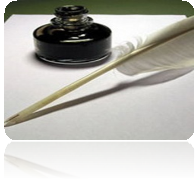
1


про публікацію авторської розробки
Додати розробку
